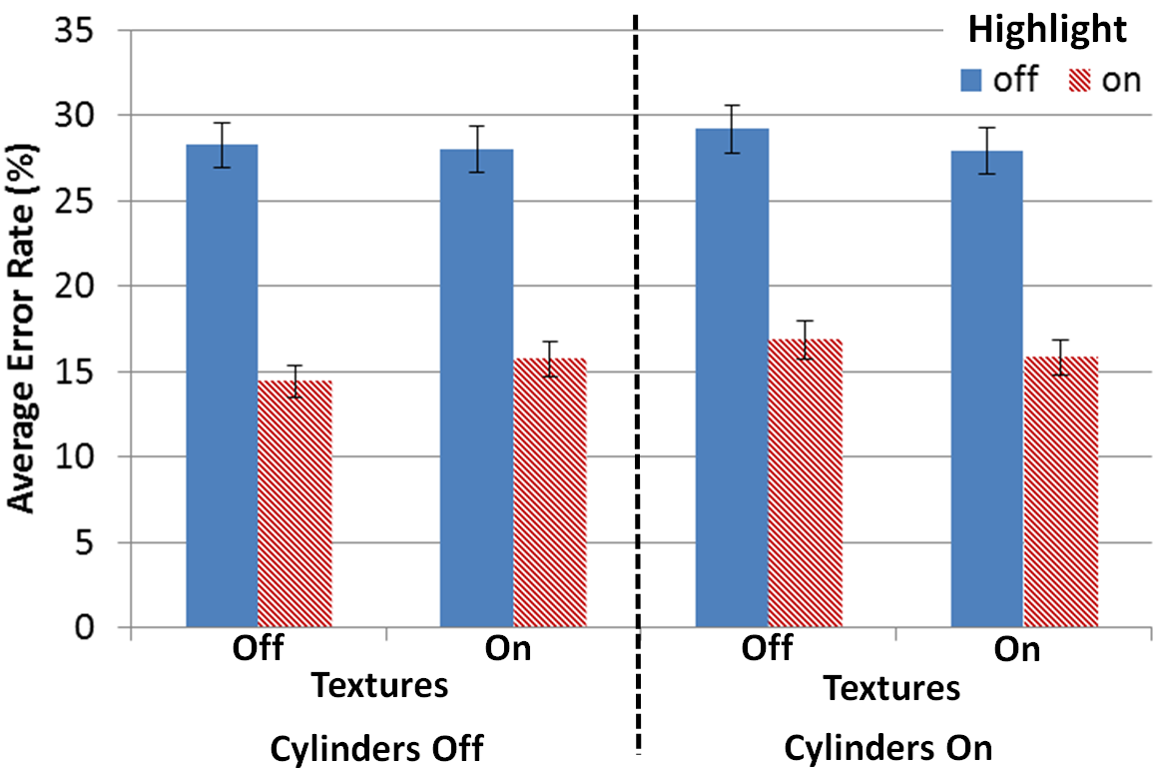
Visual Aids in 3D Point Selection Experiments Inproceedings
Robert J. Teather, Wolfgang Stuerzlinger
Abstract:
We present a study investigating the influence of visual aids on 3D point selection tasks. In a Fitts' law pointing experiment, we compared the effects of texturing, highlighting targets upon being touched, and the presence of support cylinders intended to eliminate floating targets. Results of the study indicate that texturing and support cylinders did not significantly influence performance. Enabling target highlighting increased movement speed, while decreasing error rate. Pointing throughput was unaffected by this speed-accuracy tradeoff. Highlighting also eliminated significant differences between selection coordinate depth deviation and the deviation in the two orthogonal axes.
Date of publication:
Oct - 2014
